Metamorphism is the transformation of existing rock (the protolith) to rock with a different mineral composition or texture. Metamorphism takes place at temperatures in excess of 150 °C (300 °F), and often also at elevated pressure or in the presence of chemically active fluids, but the rock remains mostly solid during the transformation.[1] Metamorphism is distinct from weathering or diagenesis, which are changes that take place at or just beneath Earth's surface.[2]
Various forms of metamorphism exist, including regional, contact, hydrothermal, shock, and dynamic metamorphism. These differ in the characteristic temperatures, pressures, and rate at which they take place and in the extent to which reactive fluids are involved. Metamorphism occurring at increasing pressure and temperature conditions is known as prograde metamorphism, while decreasing temperature and pressure characterize retrograde metamorphism.
Metamorphic petrology is the study of metamorphism. Metamorphic petrologists rely heavily on statistical mechanics and experimental petrology to understand metamorphic processes.
https://en.wikipedia.org/wiki/Metamorphism
Weathering is the deterioration of rocks, soils and minerals as well as wood and artificial materials through contact with water, atmospheric gases, and biological organisms. Weathering occurs in situ (on site, with little or no movement), and so is distinct from erosion, which involves the transport of rocks and minerals by agents such as water, ice, snow, wind, waves and gravity.
Weathering processes are divided into physical and chemical weathering. Physical weathering involves the breakdown of rocks and soils through the mechanical effects of heat, water, ice, or other agents. Chemical weathering involves the chemical reaction of water, atmospheric gases, and biologically produced chemicals with rocks and soils. Water is the principal agent behind both physical and chemical weathering,[1] though atmospheric oxygen and carbon dioxide and the activities of biological organisms are also important.[2] Chemical weathering by biological action is also known as biological weathering.[3]
The materials left over after the rock breaks down combine with organic material to create soil. Many of Earth's landforms and landscapes are the result of weathering processes combined with erosion and re-deposition. Weathering is a crucial part of the rock cycle, and sedimentary rock, formed from the weathering products of older rock, covers 66% of the Earth's continents and much of its ocean floor.[4]
Physical weathering
Physical weathering, also called mechanical weathering or disaggregation, is the class of processes that causes the disintegration of rocks without chemical change.Physical weathering involves the breakdown of rocks into smaller fragments through processes such as expansion and contraction, mainly due to temperature changes. Two types of physical breakdown are freeze-thaw weathering and thermal fracturing. Pressure release can also cause weathering without temperature change. It is usually much less important than chemical weathering, but can be significant in subarctic or alpine environments.[5] Furthermore, chemical and physical weathering often go hand in hand. For example, cracks extended by physical weathering will increase the surface area exposed to chemical action, thus amplifying the rate of disintegration.[6]
Frost weathering is the most important form of physical weathering. Next in importance is wedging by plant roots, which sometimes enter cracks in rocks and pry them apart. The burrowing of worms or other animals may also help disintegrate rock, as can "plucking" by lichens.[7]
Frost weathering
Frost weathering is the collective name for those forms of physical weathering that are caused by the formation of ice within rock outcrops. It was long believed that the most important of these is frost wedging, which results from the expansion of pore water when it freezes. However, a growing body of theoretical and experimental work suggests that ice segregation, in which supercooled water migrates to lenses of ice forming within the rock, is the more important mechanism.[8][9]
When water freezes, its volume increases by 9.2%. This expansion can theoretically generate pressures greater that 200 megapascals (29,000 psi), though a more realistic upper limit is 14 megapascals (2,000 psi). This is still much greater than the tensile strength of granite, which is about 4 megapascals (580 psi). This makes frost wedging, in which pore water freezes and its volumetric expansion fractures the enclosing rock, appear to be a plausible mechanism for frost weathering. However, ice will simply expand out of a straight, open fracture before it can generate significant pressure. Thus frost wedging can only take place in small, tortuous fractures.[5] The rock must also be almost completely saturated with water, or the ice will simply expand into the air spaces in the unsaturated rock without generating much pressure. These conditions are unusual enough that frost wedging is unlikely to be the dominant process of frost weathering.[10] Frost wedging is most effective where there are daily cycles of melting and freezing of water-saturated rock, so it is unlikely to be significant in the tropics, in polar regions or in arid climates.[5]
Ice segregation is a less well characterized mechanism of physical weathering.[8] It takes place because ice grains always have a surface layer, often just a few molecules thick, that resembles liquid water more than solid ice, even at temperatures well below the freezing point. This premelted liquid layer has unusual properties, including a strong tendency to draw in water by capillary action from warmer parts of the rock. This results in growth of the ice grain that puts considerable pressure on the surrounding rock,[11] up to ten times greater than is likely with frost wedging. This mechanism is most effective in rock whose temperature averages just below the freezing point, −4 to −15 °C (25 to 5 °F). Ice segregation results in growth of ice needles and ice lenses within fractures in the rock and parallel to the rock surface, that gradually pry the rock apart.[9]
Thermal stress
Thermal stress weathering results from the expansion and contraction of rock due to temperature changes. Thermal stress weathering is most effective when the heated portion of the rock is buttressed by surrounding rock, so that it is free to expand in only one direction.[12]
Thermal stress weathering comprises two main types, thermal shock and thermal fatigue. Thermal shock takes place when the stresses are so great that the rock cracks immediately, but this is uncommon. More typical is thermal fatigue, in which the stresses are not great enough to cause immediate rock failure, but repeated cycles of stress and release gradually weaken the rock.[12]
Thermal stress weathering is an important mechanism in deserts, where there is a large diurnal temperature range, hot in the day and cold at night.[13] As a result, thermal stress weathering is sometimes called insolation weathering, but this is misleading. Thermal stress weathering can be caused by any large change of temperature, and not just intense solar heating. It is likely as important in cold climates as in hot, arid climates.[12] Wildfires can also be a significant cause of rapid thermal stress weathering.[14]
The importance of thermal stress weathering has long been discounted by geologists,[5][9] based on experiments in the early 20th century that seemed to show that its effects were unimportant. These experiments have since been criticized as unrealistic, since the rock samples were small, were polished (which reduces nucleation of fractures), and were not buttressed. These small samples were thus able to expand freely in all directions when heated in experimental ovens, which failed to produce the kinds of stress likely in natural settings. The experiments were also more sensitive to thermal shock than thermal fatigue, but thermal fatigue is likely the more important mechanism in nature. Geomorphologists have begun to reemphasize the importance of thermal stress weathering, particularly in cold climates.[12]
Pressure release
Pressure release or unloading is a form of physical weathering seen when deeply buried rock is exhumed. Intrusive igneous rocks, such as granite, are formed deep beneath the Earth's surface. They are under tremendous pressure because of the overlying rock material. When erosion removes the overlying rock material, these intrusive rocks are exposed and the pressure on them is released. The outer parts of the rocks then tend to expand. The expansion sets up stresses which cause fractures parallel to the rock surface to form. Over time, sheets of rock break away from the exposed rocks along the fractures, a process known as exfoliation. Exfoliation due to pressure release is also known as sheeting.[15]
As with thermal weathering, pressure release is most effective in buttressed rock. Here the differential stress directed towards the unbuttressed surface can be as high as 35 megapascals (5,100 psi), easily enough to shatter rock. This mechanism is also responsible for spalling in mines and quarries, and for the formation of joints in rock outcrops.[16]
Retreat of an overlying glacier can also lead to exfoliation due to pressure release. This can be enhanced by other physical wearing mechanisms.[17]
Salt-crystal growth
Salt crystallization (also known as salt weathering, salt wedging or haloclasty) causes disintegration of rocks when saline solutions seep into cracks and joints in the rocks and evaporate, leaving salt crystals behind. As with ice segregation, the surfaces of the salt grains draw in additional dissolved salts through capillary action, causing the growth of salt lenses that exert high pressure on the surrounding rock. Sodium and magnesium salts are the most effective at producing salt weathering. Salt weathering can also take place when pyrite in sedimentary rock is chemically weathered to iron(II) sulfate and gypsum, which then crystallize as salt lenses.[9]
Salt crystallization can take place wherever salts are concentrated by evaporation. It is thus most common in arid climates where strong heating causes strong evaporation and along coasts.[9] Salt weathering is likely important in the formation of tafoni, a class of cavernous rock weathering structures.[18]
Biological effects on mechanical weathering
Living organisms may contribute to mechanical weathering, as well as chemical weathering (see § Biological weathering below). Lichens and mosses grow on essentially bare rock surfaces and create a more humid chemical microenvironment. The attachment of these organisms to the rock surface enhances physical as well as chemical breakdown of the surface microlayer of the rock. Lichens have been observed to pry mineral grains loose from bare shale with their hyphae (rootlike attachment structures), a process described as plucking, [15] and to pull the fragments into their body, where the fragments then undergo a process of chemical weathering not unlike digestion.[19] On a larger scale, seedlings sprouting in a crevice and plant roots exert physical pressure as well as providing a pathway for water and chemical infiltration.[7]
Chemical weathering
Most rock forms at elevated temperature and pressure, and the minerals making up the rock are often chemically unstable in the relatively cool, wet, and oxidizing conditions typical of the Earth's surface. Chemical weathering takes place when water, oxygen, carbon dioxide, and other chemical substances react with rock to change its composition. These reactions convert some of the original primary minerals in the rock to secondary minerals, remove other substances as solutes, and leave the most stable minerals as a chemically unchanged resistate. In effect, chemical weathering changes the original set of minerals in the rock into a new set of minerals that is in closer equilibrium with surface conditions. However, true equilibrium is rarely reached, because weathering is a slow process, and leaching carries away solutes produced by weathering reactions before they can accumulate to equilibrium levels. This is particularly true in tropical environments.[20]
Water is the principal agent of chemical weathering, converting many primary minerals to clay minerals or hydrated oxides via reactions collectively described as hydrolysis. Oxygen is also important, acting to oxidize many minerals, as is carbon dioxide, whose weathering reactions are described as carbonation.[21]
The process of mountain block uplift is important in exposing new rock strata to the atmosphere and moisture, enabling important chemical weathering to occur; significant release occurs of Ca2+ and other ions into surface waters.[22]
Dissolution
Dissolution (also called simple solution or congruent dissolution) is the process in which a mineral dissolves completely without producing any new solid substance.[23] Rainwater easily dissolves soluble minerals, such as halite or gypsum, but can also dissolve highly resistant minerals such as quartz, given sufficient time.[24] Water breaks the bonds between atoms in the crystal:[25]
The overall reaction for dissolution of quartz is
- SiO2 + 2H2O → H4SiO4
The dissolved quartz takes the form of silicic acid.
A particularly important form of dissolution is carbonate dissolution, in which atmospheric carbon dioxide enhances solution weathering. Carbonate dissolution affects rocks containing calcium carbonate, such as limestone and chalk. It takes place when rainwater combines with carbon dioxide to form carbonic acid, a weak acid, which dissolves calcium carbonate (limestone) and forms soluble calcium bicarbonate. Despite a slower reaction kinetics, this process is thermodynamically favored at low temperature, because colder water holds more dissolved carbon dioxide gas (due to the retrograde solubility of gases). Carbonate dissolution is therefore an important feature of glacial weathering.[26]
Carbonate dissolution involves the following steps:
- CO2 + H2O → H2CO3
- carbon dioxide + water → carbonic acid
- H2CO3 + CaCO3 → Ca(HCO3)2
- carbonic acid + calcium carbonate → calcium bicarbonate
Carbonate dissolution on the surface of well-jointed limestone produces a dissected limestone pavement. This process is most effective along the joints, widening and deepening them.[27]
In unpolluted environments, the pH of rainwater due to dissolved carbon dioxide is around 5.6. Acid rain occurs when gases such as sulfur dioxide and nitrogen oxides are present in the atmosphere. These oxides react in the rain water to produce stronger acids and can lower the pH to 4.5 or even 3.0. Sulfur dioxide, SO2, comes from volcanic eruptions or from fossil fuels, can become sulfuric acid within rainwater, which can cause solution weathering to the rocks on which it falls.[28]
Hydrolysis and carbonation
Hydrolysis (also called incongruent dissolution) is a form of chemical weathering in which only part of a mineral is taken into solution. The rest of the mineral is transformed into a new solid material, such as a clay mineral.[29] For example, forsterite (magnesium olivine) is hydrolyzed into solid brucite and dissolved silicic acid:
- Mg2SiO4 + 4 H2O ⇌ 2 Mg(OH)2 + H4SiO4
- forsterite + water ⇌ brucite + silicic acid
Most hydrolysis during weathering of minerals is acid hydrolysis, in which protons (hydrogen ions), which are present in acidic water, attack chemical bonds in mineral crystals.[30] The bonds between different cations and oxygen ions in minerals differ in strength, and the weakest will be attacked first. The result is that minerals in igneous rock weather in roughly the same order in which they were originally formed (Bowen's Reaction Series).[31] Relative bond strength is shown in the following table:[25]
| Bond | Relative strength |
|---|---|
| Si–O | 2.4 |
| Ti–O | 1.8 |
| Al–O | 1.65 |
| Fe+3–O | 1.4 |
| Mg–O | 0.9 |
| Fe+2–O | 0.85 |
| Mn–O | 0.8 |
| Ca–O | 0.7 |
| Na–O | 0.35 |
| K–O | 0.25 |
This table is only a rough guide to order of weathering. Some minerals, such as illite, are unusually stable, while silica is unusually unstable given the strength of the silicon-oxygen bond.[32]
Carbon dioxide that dissolves in water to form carbonic acid is the most important source of protons, but organic acids are also important natural sources of acidity.[33] Acid hydrolysis from dissolved carbon dioxide is sometimes described as carbonation, and can result in weathering of the primary minerals to secondary carbonate minerals.[34] For example, weathering of forsterite can produce magnesite instead of brucite via the reaction:
- Mg2SiO4 + 2 CO2 + 2 H2O ⇌ 2 MgCO3 + H4SiO4
- forsterite + carbon dioxide + water ⇌ magnesite + silicic acid in solution
Carbonic acid is consumed by silicate weathering, resulting in more alkaline solutions because of the bicarbonate. This is an important reaction in controlling the amount of CO2 in the atmosphere and can affect climate.[35]
Aluminosilicates containing highly soluble cations, such as sodium or potassium ions, will release the cations as dissolved bicarbonates during acid hydrolysis:
- 2 KAlSi3O8 + 2 H2CO3 + 9 H2O ⇌ Al2Si2O5(OH)4 + 4 H4SiO4 + 2 K+ + 2 HCO3−
- orthoclase (aluminosilicate feldspar) + carbonic acid + water ⇌ kaolinite (a clay mineral) + silicic acid in solution + potassium and bicarbonate ions in solution
Oxidation
Within the weathering environment, chemical oxidation of a variety of metals occurs. The most commonly observed is the oxidation of Fe2+ (iron) by oxygen and water to form Fe3+ oxides and hydroxides such as goethite, limonite, and hematite. This gives the affected rocks a reddish-brown coloration on the surface which crumbles easily and weakens the rock. Many other metallic ores and minerals oxidize and hydrate to produce colored deposits, as does sulfur during the weathering of sulfide minerals such as chalcopyrites or CuFeS2 oxidizing to copper hydroxide and iron oxides.[36]
Hydration
Mineral hydration is a form of chemical weathering that involves the rigid attachment of water molecules or H+ and OH- ions to the atoms and molecules of a mineral. No significant dissolution takes place. For example, iron oxides are converted to iron hydroxides and the hydration of anhydrite forms gypsum.[37]
Bulk hydration of minerals is secondary in importance to dissolution, hydrolysis, and oxidation,[36] but hydration of the crystal surface is the crucial first step in hydrolysis. A fresh surface of a mineral crystal exposes ions whose electrical charge attracts water molecules. Some of these molecules break into H+ that bonds to exposed anions (usually oxygen) and OH- that bonds to exposed cations. This further disrupts the surface, making it susceptible to various hydrolysis reactions. Additional protons replace cations exposed in the surface, freeing the cations as solutes. As cations are removed, silicon-oxygen and silicon-aluminium bonds become more susceptible to hydrolysis, freeing silicic acid and aluminium hydroxides to be leached away or to form clay minerals.[32][38] Laboratory experiments show that weathering of feldspar crystals begins at dislocations or other defects on the surface of the crystal, and that the weathering layer is only a few atoms thick. Diffusion within the mineral grain does not appear to be significant.[39]
Biological weathering
Mineral weathering can also be initiated or accelerated by soil microorganisms. Soil organisms make up about 10 mg/cm3 of typical soils, and laboratory experiments have demonstrated that albite and muscovite weather twice as fast in live versus sterile soil. Lichens on rocks are among the most effective biological agents of chemical weathering.[33] For example, an experimental study on hornblende granite in New Jersey, USA, demonstrated a 3x – 4x increase in weathering rate under lichen covered surfaces compared to recently exposed bare rock surfaces.[40]
The most common forms of biological weathering result from the release of chelating compounds (such as certain organic acids and siderophores) and of carbon dioxide and organic acids by plants. Roots can build up the carbon dioxide level to 30% of all soil gases, aided by adsorption of CO2 on clay minerals and the very slow diffusion rate of CO2 out of the soil.[41] The CO2 and organic acids help break down aluminium- and iron-containing compounds in the soils beneath them. Roots have a negative electrical charge balanced by protons in the soil next to the roots, and these can be exchanged for essential nutrient cations such as potassium.[42] Decaying remains of dead plants in soil may form organic acids which, when dissolved in water, cause chemical weathering.[43] Chelating compounds, mostly low molecular weight organic acids, are capable of removing metal ions from bare rock surfaces, with aluminium and silicon being particularly susceptible.[44] The ability to break down bare rock allows lichens to be among the first colonizers of dry land.[45] The accumulation of chelating compounds can easily affect surrounding rocks and soils, and may lead to podsolisation of soils.[46][47]
The symbiotic mycorrhizal fungi associated with tree root systems can release inorganic nutrients from minerals such as apatite or biotite and transfer these nutrients to the trees, thus contributing to tree nutrition.[48] It was also recently evidenced that bacterial communities can impact mineral stability leading to the release of inorganic nutrients.[49] A large range of bacterial strains or communities from diverse genera have been reported to be able to colonize mineral surfaces or to weather minerals, and for some of them a plant growth promoting effect has been demonstrated.[50] The demonstrated or hypothesised mechanisms used by bacteria to weather minerals include several oxidoreduction and dissolution reactions as well as the production of weathering agents, such as protons, organic acids and chelating molecules.
Weathering on the ocean floor
Weathering of basaltic oceanic crust differs in important respects from weathering in the atmosphere. Weathering is relatively slow, with basalt becoming less dense, at a rate of about 15% per 100 million years. The basalt becomes hydrated, and is enriched in total and ferric iron, magnesium, and sodium at the expense of silica, titanium, aluminum, ferrous iron, and calcium.[51]
Building weathering
Buildings made of any stone, brick or concrete are susceptible to the same weathering agents as any exposed rock surface. Also statues, monuments and ornamental stonework can be badly damaged by natural weathering processes. This is accelerated in areas severely affected by acid rain.[52]
Accelerated building weathering may be a threat to the environment and occupant safety. Design strategies can moderate the impact of environmental effects, such as using of pressure-moderated rain screening, ensuring that the HVAC system is able to effectively control humidity accumulation and selecting concrete mixes with reduced water content to minimize the impact of freeze-thaw cycles. [53]
Properties of well-weathered soils
Granitic rock, which is the most abundant crystalline rock exposed at the Earth's surface, begins weathering with destruction of hornblende. Biotite then weathers to vermiculite, and finally oligoclase and microcline are destroyed. All are converted into a mixture of clay minerals and iron oxides.[31] The resulting soil is depleted in calcium, sodium, and ferrous iron compared with the bedrock, and magnesium is reduced 40% and silicon by 15%. At the same time, the soil is enriched in aluminium and potassium, by at least 50%; by titanium, whose abundance triples; and by ferric iron, whose abundance increases by an order of magnitude compared with the bedrock.[54]
Basaltic rock is more easily weathered than granitic rock, due to its formation at higher temperatures and drier conditions. The fine grain size and presence of volcanic glass also hasten weathering. In tropical settings, it rapidly weathers to clay minerals, aluminium hydroxides, and titanium-enriched iron oxides. Because most basalt is relatively poor in potassium, the basalt weathers directly to potassium-poor montmorillonite, then to kaolinite. Where leaching is continuous and intense, as in rain forests, the final weathering product is bauxite, the principal ore of aluminium. Where rainfall is intense but seasonal, as in monsoon climates, the final weathering product is iron- and titanium-rich laterite. [55] Conversion of kaolinite to bauxite occurs only with intense leaching, as ordinary river water is in equilibrium with kaolinite.[56]
Soil formation requires between 100 and 1,000 years, a very brief interval in geologic time. As a result, some formations show numerous paleosol (fossil soil) beds. For example, the Willwood Formation of Wyoming contains over 1,000 paleosol layers in a 770 meters (2,530 ft) section representing 3.5 million years of geologic time. Paleosols have been identified in formations as old as Archean (over 2.5 billion years in age). However, paleosols are difficult to recognize in the geologic record.[57] Indications that a sedimentary bed is a paleosol include a gradational lower boundary and sharp upper boundary, the presence of much clay, poor sorting with few sedimentary structures, rip-up clasts in overlying beds, and desiccation cracks containing material from higher beds.[58]
The degree of weathering of a soil can be expressed as the chemical index of alteration, defined as 100 Al2O3/(Al2O3 + CaO + Na2O + K2O). This varies from 47 for unweathered upper crust rock to 100 for fully weathered material.[59]
Weathering of non-geological materials
Wood can be physically and chemically weathered by hydrolysis and other processes relevant to minerals, but in addition, wood is highly susceptible to weathering induced by ultraviolet radiation from sunlight. This induces photochemical reactions that degrade the wood surface.[60] Photochemical reactions are also significant in the weathering of paint[61] and plastics.[62]
Gallery
Salt weathering of sandstone near Qobustan, Azerbaijan
Permian sandstone wall near Sedona, Arizona, United States, weathered into a small alcove
Weathering on a sandstone pillar in Bayreuth
Weathering effect of acid rain on statues
See also
- Aeolian processes – Processes due to wind activity
- Biorhexistasy – Theory explaining the formation of soils and transported sediments by changes of climatic conditions
- Case hardening of rocks
- Decomposition – Process in which organic substances are broken down into simpler organic matter
- Environmental chamber
- Eluvium – End product of rock weathering
- Exfoliating granite – Granite skin peeling like an onion (desquamation) because of weathering
- Factors of polymer weathering – Photo-oxidation of polymers
- Metasomatism – Chemical alteration of a rock by hydrothermal and other fluids
- Meteorite weathering – Terrestrial alteration of a meteorite
- Pedogenesis – Process of soil formation
- Reverse weathering
- Soil production function
- Space weathering – Type of weathering
- Spheroidal weathering – Form of chemical weathering that affects jointed bedrock
- Weather testing of polymers – Controlled polymer and polymer coating degradation
- Weathering steel – Group of steel alloys designed to form a rust-like finish when exposed to weather
References
- Weathering of plastics : testing to mirror real life performance. [Brookfield, Conn.]: Society of Plastics Engineers. 1999. ISBN 9781884207754.
Other links
https://en.wikipedia.org/wiki/Weathering
Types
As geological processes apply pressure to dead biotic material over time, under suitable conditions, its metamorphic grade or rank increases successively into:
- Peat, a precursor of coal
- Lignite, or brown coal, the lowest rank of coal, most harmful to health when burned,[45] used almost exclusively as fuel for electric power generation
- Jet, a compact form of lignite, sometimes polished; used as an ornamental stone since the Upper Palaeolithic
- Sub-bituminous coal, whose properties range between those of lignite and those of bituminous coal, is used primarily as fuel for steam-electric power generation.
- Bituminous coal, a dense sedimentary rock, usually black, but sometimes dark brown, often with well-defined bands of bright and dull material. It is used primarily as fuel in steam-electric power generation and to make coke. Known as steam coal in the UK, and historically used to raise steam in steam locomotives and ships
- Anthracite coal, the highest rank of coal, is a harder, glossy black coal used primarily for residential and commercial space heating.
- Graphite is difficult to ignite and not commonly used as fuel; it is most used in pencils, or powdered for lubrication.
- Cannel coal (sometimes called "candle coal") is a variety of fine-grained, high-rank coal with significant hydrogen content, which consists primarily of liptinite.
There are several international standards for coal.[46] The classification of coal is generally based on the content of volatiles. However the most important distinction is between thermal coal (also known as steam coal), which is burnt to generate electricity via steam; and metallurgical coal (also known as coking coal), which is burnt at high temperature to make steel.
Hilt's law is a geological observation that (within a small area) the deeper the coal is found, the higher its rank (or grade). It applies if the thermal gradient is entirely vertical; however, metamorphism may cause lateral changes of rank, irrespective of depth. For example, some of the coal seams of the Madrid, New Mexico coal field were partially converted to anthracite by contact metamorphism from an igneous sill while the remainder of the seams remained as bituminous coal.[47]
https://en.wikipedia.org/wiki/Coal#History
Metamorphic grades
Metamorphic grade is an informal indication of the amount or degree of metamorphism.[77]
In the Barrovian sequence (described by George Barrow in zones of progressive metamorphism in Scotland), metamorphic grades are also classified by mineral assemblage based on the appearance of key minerals in rocks of pelitic (shaly, aluminous) origin:
Low grade ------------------- Intermediate --------------------- High grade
- Greenschist ------------- Amphibolite ----------------------- Granulite
- Slate --- Phyllite ---------- Schist ---------------------- Gneiss --- Migmatite
- Chlorite zone
- Biotite zone
- Garnet zone
- Staurolite zone
- Kyanite zone
- Sillimanite zone
- Kyanite zone
- Staurolite zone
- Garnet zone
- Biotite zone
A more complete indication of this intensity or degree is provided by the concept of metamorphic facies.[77]
https://en.wikipedia.org/wiki/Metamorphism#Metamorphic_grades
Blueschist
Blueschist ( /ˈbluːʃɪst/), also called glaucophane schist, is a metavolcanic rock[1] that forms by the metamorphism of basalt and rocks with similar composition at high pressures and low temperatures (200–500 °C (392–932 °F)), approximately corresponding to a depth of 15–30 km (9.3–18.6 mi). The blue color of the rock comes from the presence of the predominant minerals glaucophane and lawsonite.
Blueschists are schists typically found within orogenic belts as terranes of lithology in faulted contact with greenschist or rarely eclogite facies rocks.
Petrology
Blueschist, as a rock type, is defined by the presence of the minerals glaucophane + ( lawsonite or epidote ) +/- jadeite +/- albite or chlorite +/- garnet +/- muscovite in a rock of roughly basaltic composition.
Blueschist often has a lepidoblastic, nematoblastic or schistose rock microstructure defined primarily by chlorite, phengitic white mica, glaucophane, and other minerals with an elongate or platy shape.
Grain size is rarely coarse, as mineral growth is retarded by the swiftness of the rock's metamorphic trajectory and perhaps more importantly, the low temperatures of metamorphism and in many cases the anhydrous state of the basalts. However, porphyritic varieties do occur. Blueschists may appear blue, black, gray, or blue-green in outcrop.
Blueschist facies
Blueschist facies is determined by the particular temperature and pressure conditions required to metamorphose basalt to form blueschist. Felsic rocks and pelitic sediments which are subjected to blueschist facies conditions will form different mineral assemblages than metamorphosed basalt. Thereby, these rocks do not appear blue overall in color.
Blueschist mineralogy varies by rock composition, but the classic equilibrium assemblages of blueschist facies are:
- Basalts: glaucophane + lawsonite and/or epidote + albite + titanite +/- garnet +/- quartz jadeite + quartz - diagnostic of pressures ~> 10 kbar
- Ultramafic rocks: serpentinite/lizardite +/- talc +/- zoisite
- Pelites: Fe-Mg-carpholite +/- chloritoid +/- kyanite + zoisite +/- pargasite or phengite +/- albite +/- quartz +/- talc +/- garnet
- Granites: kyanite +/- paragonite +/- chlorite +/- albite +/- quartz +/- pargasite or phengite
- Calc-silicates: Various
- Limestones and marble: calcite transforms to aragonite at high pressure, but typically reverts to calcite when exhumed
Blueschist facies generally is considered to form under pressures of >0.6 GPa, equivalent to depth of burial in excess of 15–18 km, and at temperatures of between 200 and 500 °C. This is a 'low temperature, high pressure' prograde metamorphic path and is also known as the Franciscan facies series, after the west coast of the United States where these rocks are exposed. Well-exposed blueschists also occur in Greece, Turkey, Japan, New Zealand and New Caledonia.
Continued subduction of blueschist facies oceanic crust will produce eclogite facies assemblages in metamorphosed basalt (garnet + omphacitic clinopyroxene). Rocks which have been subjected to blueschist conditions during a prograde trajectory will gain heat by conduction with hotter lower crustal rocks if they remain at the 15–18 km depth. Blueschist which heats up to greater than 500 °C via this fashion will enter greenschist or eclogite facies temperature-pressure conditions, and the mineral assemblages will metamorphose to reflect the new facies conditions.
Thus in order for blueschist facies assemblages to be seen at the Earth's surface, the rock must be exhumed swiftly enough to prevent total thermal equilibration of the rocks which are under blueschist facies conditions with the typical geothermal gradient.
Blueschists and other high-pressure subduction zone rocks are thought to be exhumed rapidly by flow and/or faulting in accretionary wedges or the upper parts of subducted crust, or may return to the Earth's surface in part owing to buoyancy if the metabasaltic rocks are associated with low-density continental crust (marble, metapelite, and other rocks of continental margins).
It has been held that the absence of blueschist dating to before the Neoproterozoic Era indicates that currently exhumed rocks never reached blueschist facies at subduction zones before 1,000 million years ago. This assertion is arguably wrong because the earliest oceanic crust would have contained more magnesium than today's crust and, therefore, would have formed greenschist-like rocks at blueschist facies.[2]
History and etymology
In Minoan Crete blueschist and greenschist were used to pave streets and courtyards between 1650 and 1600 BC. These rocks were likely quarried in Agia Pelagia on the north coast of central Crete.[3]
In 1962, Edgar Bailey of the U.S. Geological Survey, introduced the concept of "blueschist" into the subject of metamorphic geology. His carefully constructed definition established the pressure and temperature conditions which produce this type of metamorphism.
See also
References
- Tziligkaki, Eleni K. (2010). "Types of schist used in buildings of Minoan Crete" (PDF). Hellenic Journal of Geosciences. 45: 317–322. Retrieved December 1, 2018.
External links
https://en.wikipedia.org/wiki/Blueschist
Orogeny is a mountain building process that takes place at a convergent plate margin when plate motion compresses the margin. An orogenic belt or orogen develops as the compressed plate crumples and is uplifted to form one or more mountain ranges. This involves a series of geological processes collectively called orogenesis. These include both structural deformation of existing continental crust and the creation of new continental crust through volcanism. Magma rising in the orogen carries less dense material upwards while leaving more dense material behind, resulting in compositional differentiation of Earth's lithosphere (crust and uppermost mantle).[1][2] A synorogenic (or synkinematic) process or event is one that occurs during an orogeny.[3]
The word "orogeny" (/ɒˈrɒdʒəni/) comes from Ancient Greek (ὄρος, óros, lit. ''mountain'' + γένεσις, génesis, lit. ''creation, origin'').[4] Although it was used before him, the term was employed by the American geologist G. K. Gilbert in 1890 to describe the process of mountain-building as distinguished from epeirogeny.[5]
| Extended crust | Oceanic crust: 0–20 Ma 20–65 Ma >65 Ma |
https://en.wikipedia.org/wiki/Orogeny
Category:Volcanic rocks
Subcategories
This category has the following 7 subcategories, out of 7 total.
A
- Aphanitic rocks (2 C, 13 P)
B
- Basalt (3 C, 22 P)
O
- Obsidian (16 P)
P
- Porphyritic rocks (1 C, 13 P)
T
- Tuff formations (3 C, 113 P)
V
- Vitreous rocks (7 P)
Pages in category "Volcanic rocks"
The following 72 pages are in this category, out of 72 total. This list may not reflect recent changes.
D
P
V
https://en.wikipedia.org/wiki/Category:Volcanic_rocks
Category:Metamorphic petrology
- Metamorphic rocks (6 C, 57 P)
Pages in category "Metamorphic petrology"
The following 49 pages are in this category, out of 49 total. This list may not reflect recent changes.
E
M
P
https://en.wikipedia.org/wiki/Category:Metamorphic_petrology
Category:Schist
Pages in category "Schist"
The following 5 pages are in this category, out of 5 total. This list may not reflect recent changes.
https://en.wikipedia.org/wiki/Category:Schist
Category:Metamorphic rocks
Subcategories
This category has the following 6 subcategories, out of 6 total.
G
- Gneiss (11 P)
M
- Metasedimentary rocks (8 P)
S
- Schist formations (11 P)
Pages in category "Metamorphic rocks"
The following 57 pages are in this category, out of 57 total. This list may not reflect recent changes.
N
https://en.wikipedia.org/wiki/Category:Metamorphic_rocks
https://en.wikipedia.org/wiki/Serpentinite
https://en.wikipedia.org/wiki/Soapstone
https://en.wikipedia.org/wiki/Skarn
https://en.wikipedia.org/wiki/Supracrustal_rock
https://en.wikipedia.org/wiki/Valentines_iron_formation
https://en.wikipedia.org/wiki/Ultramafic_rock
https://en.wikipedia.org/wiki/Talc_carbonate
https://en.wikipedia.org/wiki/Category:Metamorphic_rocks
https://en.wikipedia.org/wiki/Ultramafic_rock
https://en.wikipedia.org/wiki/Talc_carbonate
https://en.wikipedia.org/wiki/Soapstone
https://en.wikipedia.org/wiki/Supracrustal_rock
The Merlis Serpentinites are an aligned group of small serpentinite outcrops in the northwestern French Massif Central. Their parent rocks were peridotites from the upper mantle.
https://en.wikipedia.org/wiki/Merlis_Serpentinites
Metavolcanic rock is volcanic rock that shows signs of having experienced metamorphism.[1] In other words, the rock was originally produced by a volcano, either as lava or tephra. The rock was then subjected to high pressure, high temperature or both, for example by burial under younger rocks, causing the original volcanic rock to recrystallize. Metavolcanic rocks are sometimes described informally as metavolcanics.[2]
When it is possible to determine the original volcanic rock type from the properties of the metavolcanic rock (particularly if the degree of metamorphism is slight), the rock is more precisely named by appylying the prefix meta- to the original rock type. For example, a weakly metamorphosed basalt would be described as a metabasalt, or a weakly metamorphosed tuff as a metatuff.[3]
Metavolcanic rock is commonly found in greenstone belts.[4]
https://en.wikipedia.org/wiki/Metavolcanic_rock
In geology, solid-state recrystallization is a metamorphic process that occurs under high temperatures and pressures where atoms of minerals are reorganized by diffusion and/or dislocation glide. During this process, the physical structure of the minerals is altered while the composition remains unchanged. This is in contrast to metasomatism, which is the chemical alteration of a rock by hydrothermal and other fluids.
Solid-state recrystallization can be illustrated by observing how snow recrystallizes to ice. When snow is subjected to varying temperatures and pressures, individual snowflakes undergo a physical transformation but their composition remains the same. Limestone is a sedimentary rock that undergoes metamorphic recrystallization to form marble, and clays can recrystallize to muscovite mica.
https://en.wikipedia.org/wiki/Recrystallization_(geology)
Metasomatism (from the Greek μετά metá "change" and σῶμα sôma "body") is the chemical alteration of a rock by hydrothermal and other fluids.[1] It is the replacement of one rock by another of different mineralogical and chemical composition. The minerals which compose the rocks are dissolved and new mineral formations are deposited in their place. Dissolution and deposition occur simultaneously and the rock remains solid.
Synonyms of the word metasomatism are metasomatosis[2] and metasomatic process. The word metasomatose can be used as a name for specific varieties of metasomatism (for example Mg-metasomatose and Na-metasomatose).[3]
Metasomatism can occur via the action of hydrothermal fluids from an igneous or metamorphic source.
In the igneous environment, metasomatism creates skarns, greisen, and may affect hornfels in the contact metamorphic aureole adjacent to an intrusive rock mass. In the metamorphic environment, metasomatism is created by mass transfer from a volume of metamorphic rock at higher stress and temperature into a zone with lower stress and temperature, with metamorphic hydrothermal solutions acting as a solvent. This can be envisaged as the metamorphic rocks within the deep crust losing fluids and dissolved mineral components as hydrous minerals break down, with this fluid percolating up into the shallow levels of the crust to chemically change and alter these rocks.
This mechanism implies that metasomatism is open system behaviour, which is different from classical metamorphism which is the in-situ mineralogical change of a rock without appreciable change in the chemistry of the rock. Because metamorphism usually requires water in order to facilitate metamorphic reactions, metamorphism nearly always occurs with metasomatism.
Further, because metasomatism is a mass transfer process, it is not restricted to the rocks which are changed by addition of chemical elements and minerals or hydrous compounds. In all cases, to produce a metasomatic rock some other rock is also metasomatised, if only by dehydration reactions with minimal chemical change. This is best illustrated by gold ore deposits which are the product of focused concentration of fluids derived from many cubic kilometres of dehydrated crust into thin, often highly metasomatised and altered shear zones and lodes. The source region is often largely chemically unaffected compared to the highly hydrated, altered shear zones, but both must have undergone complementary metasomatism.
Metasomatism is more complicated in the Earth's mantle, because the composition of peridotite at high temperatures can be changed by infiltration of carbonate and silicate melts and by carbon dioxide-rich and water-rich fluids, as discussed by Luth (2003). Metasomatism is thought to be particularly important in changing the composition of mantle peridotite below island arcs as water is driven out of ocean lithosphere during subduction. Metasomatism has also been considered critical for enriching source regions of some silica-undersaturated magmas. Carbonatite melts are often considered to have been responsible for enrichment of mantle peridotite in incompatible elements.
Types of metasomatites
Metasomatic rocks can be extremely varied. Often, metasomatised rocks are pervasively but weakly altered, such that the only evidence of alteration is bleaching, change in colour or change in the crystallinity of micaceous minerals.
In such cases, characterising alteration often requires microscope investigation of the mineral assemblage of the rocks to characterise the minerals, any additional mineral growth, changes in protolith minerals, and so on.
In some cases, geochemical evidence can be found of metasomatic alteration processes. This is usually in the form of mobile, soluble elements such as barium, strontium, rubidium, calcium and some rare earth elements. However, to characterise the alteration properly, it is necessary to compare altered with unaltered samples.
When the process becomes extremely advanced, typical metasomatites can include:
- Chlorite or mica whole-rock replacement in shear zones, resulting in rocks in which the existing mineralogy has been completely recrystallised and replaced by hydrated minerals such as chlorite, muscovite, and serpentine.
- Skarn and skarnoid rock types, typically adjacent to granite intrusions and adjacent to reactive lithologies such as limestone, marl and banded iron formation.
- Greisen deposits within granite margins and cupolas.
- Rodingite typical of ophiolites particularly their serpentinized mafic dykes, containing grossular-andradite garnet, calcic pyroxene, vesuvianite, epidote and scapolite.
- Fenite, as a variant of metasomatism associated with strongly alkaline or carbonatitic magmatism introducing a variety of feldspars, sodic pyroxenes or amphiboles and often unusual minerals (such as chevkinite or columbite) comprising ordinarily incompatible elements that do not readily become incorporated into a crystal lattice i.e. niobium, zirconium
- Albitite, from replacement of plagioclase by albite (albitization)[4][5]
Effects of metasomatism in mantle peridotite can be either modal or cryptic. In cryptic metasomatism, mineral compositions are changed, or introduced elements are concentrated on grain boundaries and the peridotite mineralogy appears unchanged. In modal metasomatism, new minerals are formed.
Cryptic metasomatism may be caused as rising or percolating melts interact with surrounding peridotite, and compositions of both melts and peridotite are changed. At high mantle temperatures, solid-state diffusion can also be effective in changing rock compositions over tens of centimeters adjacent to melt conduits: gradients in mineral composition adjacent to pyroxenite dikes may preserve evidence of the process.
Modal metasomatism may result in formation of amphibole and phlogopite, and the presence of these minerals in peridotite xenoliths has been considered strong evidence of metasomatic processes in the mantle. Formation of minerals less common in peridotite, such as dolomite, calcite, ilmenite, rutile, and armalcolite, is also attributed to melt or fluid metasomatism.
Alteration assemblages
Investigation of altered rocks in hydrothermal ore deposits has highlighted several ubiquitous types of alteration assemblages which create distinct groups of metasomatic alteration effects, textures and mineral assemblages.
- Propylitic alteration is caused by iron and sulfur-bearing hydrothermal fluids, and typically results in epidote-chlorite-pyrite alteration, often with hematite and magnetite facies.
- Albite-epidote alteration is caused by silica-bearing fluids rich in sodium and calcium, and typically results in weak albite-silica-epidote.
- Potassic alteration, typical of porphyry copper and lode gold deposits, results in production of micaceous, potassic minerals such as biotite in iron-rich rocks, muscovite mica or sericite in felsic rocks, and orthoclase (adularia) alteration, often quite pervasive and producing distinct salmon-pink alteration vein selvages.
- Quartz-sericite-pyrite alteration, in which these minerals can be deposited both in veins and in a disseminated manner; sericite in particular replaces plagioclase and biotite. This is common in porphyry copper and porphyry molybdenum deposits.
- Argillic alteration, commonly present in the distal areas of porphyry deposits, is a low-temperature assemblage that converts feldspars and some other minerals into clay minerals such as kaolinite and illite. It can overprint older, higher-temperature alteration assemblages.[6]
Rarer types of hydrothermal fluids may include highly carbonic fluids, resulting in advanced carbonation reactions of the host rock typical of calc-silicates, and silica-hematite fluids resulting in production of jasperoids, manto ore deposits and pervasive zones of silicification, typically in dolomite strata. Stressed minerals and country rocks of granitic plutons are replaced by porphyroblasts of orthoclase and quartz, in the Papoose Flat quartz monzonites.[7]
References
- Dickson, F. W., 1996, Porphyroblasts of barium-zoned K-feldspar and quartz, Papoose Flat California, genesis and exploration implications. In Coyner,A.R., Fahey, P.I., eds. Geology and Ore Deposits of the American Cordillera: Geological Society of Nevada Symposium Proceedings, Reno/Sparks, Nevada, April 1995, p. 909-924. Dickson, F. W., 2000, Chemical emplacement of magma, v. 30, p.475-487. Dickson, F. W., 2005, Role of liquids in irreversible processes in earth and replacement in Papoose Flat pluton, California. In Rhoden, R. H., Steininger, R. C., and Vikre, R.G., eds: Geol. Soc. Nevada Symposium 2005: Window to the World, Reno, Nevada May, 2005, p. 161-178.
- Luth, R. W., Mantle volatiles -- distribution and consequences. In The Mantle and Core (ed. R. W. Carlson) Volume 2 Treatise on Geochemistry (editors H. D. Holland and K. K. Turekian), Elsevier-Pergamon, Oxford, pages 319-361 (2003). ISBN 0-08-043751-6
See also
- Hydrothermal circulation – Circulation of water driven by heat exchange
- Ore genesis – How the various types of mineral deposits form within the Earth's crust
- Greisen – Highly altered granitic rock or pegmatite
- Skarn – Hard, coarse-grained, hydrothermally altered metamorphic rocks
- Hornfels – series of contact metamorphic rocks that have been baked and indurated by the heat of intrusive igneous masses
- Pneumatolysis
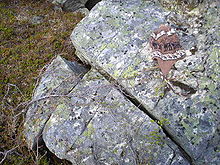
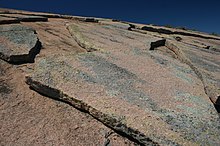
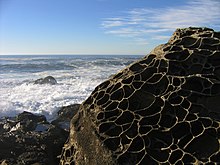
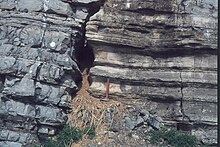
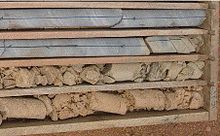


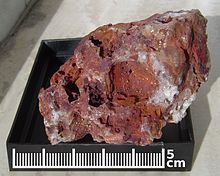
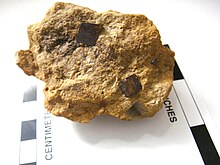
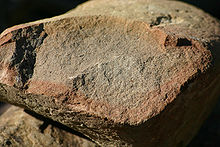
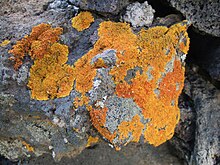
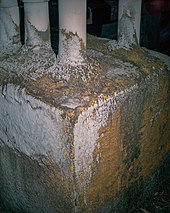

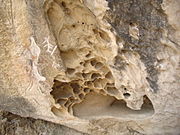




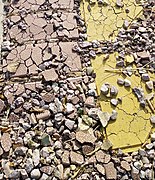
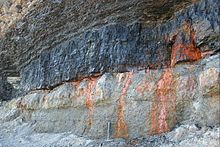








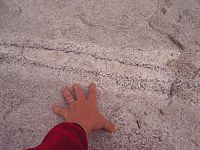
No comments:
Post a Comment